Featured Articles
Battle Hymn – Part 8: Shadow and Light
 When Aaron Wade left San Francisco in 1945, he left behind a son and a pregnant wife. “He didn’t want to be a family man,” Jenny said. “He didn’t want nothing.” Right around the time he took a dive against Sugar Ray Robinson in February 1950, Alan Roy Wade turned four and had yet to meet him. By then, Jenny had given up and filed for divorce. It was finalized that year.
When Aaron Wade left San Francisco in 1945, he left behind a son and a pregnant wife. “He didn’t want to be a family man,” Jenny said. “He didn’t want nothing.” Right around the time he took a dive against Sugar Ray Robinson in February 1950, Alan Roy Wade turned four and had yet to meet him. By then, Jenny had given up and filed for divorce. It was finalized that year.
Wade moved in with a girlfriend in Jersey City and got a job at the Department of Sanitation. There were half-hearted attempts to reach out to his sons and every so often an envelope with a $20 money order inside would arrive at his ex-wife’s address in San Francisco. It was made out in his girlfriend’s handwriting, which speaks well of her character. In the mid-fifties, she died in a car accident and Wade went into a tailspin; he reached for the bottle with both hands and drowned his sorrows, or watched them swim.
In 1960, he made his way to Peoria to meet Alan for the first time. His mother Willie Mae and Jenny seem to have arranged the family reunion and Wade did his part; he stuck a cork in the bottle and put on a suit to make a good first impression. “He greeted me like a father,” Alan recalled, “and he looked younger than his years.” Wade tried to maintain contact by telephone—he tried to be a better father—but could not sustain it. The binging was getting worse.
He was bottoming out. Somewhere in his drunken haze the ghost of Kid Farmer was coming on, and hell followed with him.
When Kid Farmer was born over a saloon in 1884, Peoria was still called “Still City” and produced more whiskey than any other city in the nation. The saloon was only a few doors down from where the Wades would live in 1922/1923. Like Wade, Farmer became a professional fighter who never quite abstained from booze. Like Wade, he excelled in the sport anyway. Farmer was the kind of local legend carried from the ring on the shoulders of cheering fans—he reportedly had over 600 fights and 283 knockouts before he took a running leap into a bottomless vat.
It was said that Farmer was avoided by name-fighters and drank out of discouragement. It was also said Farmer never got a title shot because he was a drunk. Either way or both, he would fight half-cocked just like Wade did. “Staggering is strength,” he’d quip. “The weak fall down.” Eventually, his career became as erratic as his field of vision; he’d be in a main event one night and a curtain-raiser the next. When his career finally collapsed, he did too. Anyone looking for him was bound to find him face-down in a gutter beside an empty bottle or in a flop on skid row. One night in 1945, he got the bum’s rush out of a saloon and stumbled into the street where he was killed by a car just yards from where he was born. He’s buried in an unmarked grave in St. Mary’s cemetery, according to local historian Chuck Burroughs, “surrounded by hundreds of bodies of decent folk, who, if they knew Farmer was in their midst, would get up and walk away.”
Wade was teetering on the edge of Kid Farmer’s vat.
In May 1962, Wade was laid out on the third floor of a condemned house in Jersey City. “Paralyzed drunk,” is how he described it. He heard someone’s voice above him. “C’mon get yourself up,” it said. Wade could not. “Not a muscle in my body would move,” he said. So he murmured a prayer: “Please, Lord, let me stand on my feet.”
“The good Lord heard me,” he said. “I was able to stand, wobbly a bit, but steady enough to walk.” He made a promise then and there to stop drinking, but had another attack on the way home and was taken to the hospital. “There they told me what I always knew,” Wade said. “I was an alcoholic.”
He was likely suffering from alcoholic myopathy, the symptoms of which include sudden weakness and collapse after a drinking bout. It is invited by long-term alcohol use, as is delirium tremens (DTs), neuropathy, liver disease, and death.
—Wade had nowhere to go except up.
“I accepted Jesus Christ as my Lord and personal Saviour,” he told anyone who would listen. “Ever since that day, He has blessed me.” Wade began examining a conscience dulled for decades. What he saw were numerous tragedies that were the direct results of his “waywardness.” He had a son with a teenage sweetheart in Peoria and left them both behind when he moved west, he got mixed up with shady characters in San Francisco, got shot, almost got indicted, abandoned his wife and children when he moved east, blew a title shot after a drunken tantrum at the New York State Athletic Commission, trashed his last comeback, and became a Bowery bum shunned by his family. Wade had many regrets, though he found comfort in the sublime feeling that he was forgiven. Moved with gratitude, he began studying for the Christian ministry.
Early in 1968, Deacon Wade returned to San Francisco after a twenty-three-year absence. “I guess it was the good Lord that told me to come back to San Francisco,” he said, “where I might be able to carry on His work among people who might have remembered me when I was fighting.” He also drew nearer to his sons, now young men. “We saw him every week,” Alan told me. “Every week.”
“What was he like?” I asked Alan. “He was even-tempered, a happy man, always smiling and laughing,” he said. When either he or his brother talked back to his mother, though, the smile fell off. “He’d straighten us up,” Alan said with a chuckle, and left it at that.
He saw his father praying often and at different times during the day—head bowed, eyes closed, lips moving.
In March, the long-retired fighter stopped by the offices of the San Francisco Examiner and found the boxing writer who covered so many of his West Coast wars.
Eddie Muller glanced up from his desk as a little man with enormous shoulders pulled up a chair. Wade wore glasses by then, but Muller remembered him. “Aaron Wade was a prize fighter. A good one too,” he would write after their reunion. “Good enough to whip Archie Moore right here in San Francisco.” Wade told Muller what he had been through since his glory days, he spoke of shadows and light and how he’d “been telling others at church missions and meetings that the good Lord can do for them what He did for me.” Muller was impressed when Wade didn’t ask for a hand-out. He was even more impressed when Wade told him he received no compensation besides the “good feeling” he got helping the less fortunate.
“Even if you only help one you’ve really accomplished something,” he said.
Muller decided to help one too. He decided to help Wade. “Wade didn’t ask for this help. I am,” Muller told the Examiner’s100,000 subscribers. “The fellow can use a job.”
It was an irony that Wade probably welcomed as a test of faith when the Gallo Wine Company, then located on the south side of San Francisco, offered him a job at its warehouse. Wade accepted it and worked there for the rest of his life. Every Friday, employees would be handed a couple bottles of wine with their paychecks, but by then Wade and Kid Farmer’s ghost had gone separate ways. He gave the bottles away.
He still liked to eat. Alan fondly recalled going with him to the North Beach section of San Francisco. Wade, looking sharp in a suit, would walk into an Italian club and hobnob with guys who knew the slam-bang fighter he once was. He and his sons, who sat cowed by his warning not to say “mafia,” ate porchetta, Prosciutto di Parma, and Pork Chop Milanese free of charge. It was a sign of respect.
On March 5, 1971, Wade, now 54, was married for the second time to a short, heavyset nurse’s aide named Sallie Cousar —and life was good.
Photo by Kurt Bank found in Shaping San Francisco (digital archive).
Kid Farmer’s story found in Come Out Fighting: True Fight Tales for Fight Fans by Chuck Burroughs (1977), pp. 51-68; San Francisco Examiner 3/1/68 and 4/20/74 (Eddie Muller).
Springs Toledo can be contacted at scalinatella@hotmail.com .
-

 Book Review4 weeks ago
Book Review4 weeks agoMark Kriegel’s New Book About Mike Tyson is a Must-Read
-
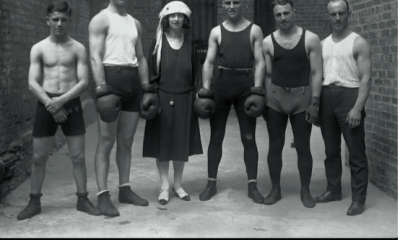
 Featured Articles2 weeks ago
Featured Articles2 weeks agoThe Hauser Report: Debunking Two Myths and Other Notes
-
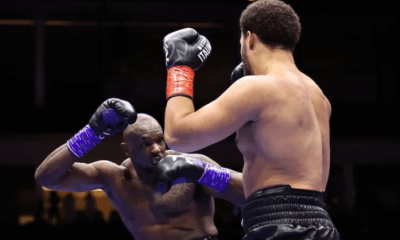
 Featured Articles3 weeks ago
Featured Articles3 weeks agoMoses Itauma Continues his Rapid Rise; Steamrolls Dillian Whyte in Riyadh
-
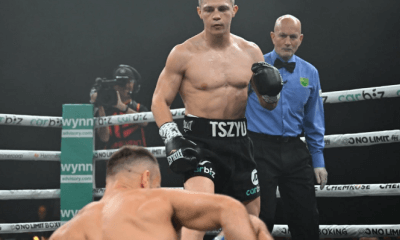
 Featured Articles3 weeks ago
Featured Articles3 weeks agoNikita Tszyu and Australia’s Short-Lived Boxing Renaissance
-
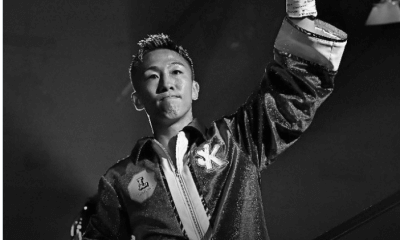
 Featured Articles4 weeks ago
Featured Articles4 weeks agoKotari and Urakawa – Two Fatalities on the Same Card in Japan: Boxing’s Darkest Day
-

 Featured Articles3 weeks ago
Featured Articles3 weeks agoIs Moses Itauma the Next Mike Tyson?
-
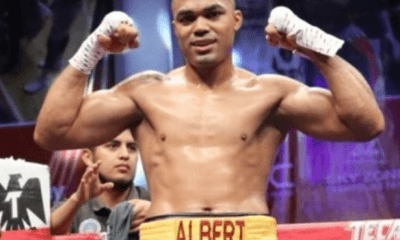
 Featured Articles4 weeks ago
Featured Articles4 weeks agoRamirez and Cuello Score KOs in Libya; Fonseca Upsets Oumiha
-

 Featured Articles2 weeks ago
Featured Articles2 weeks agoBoxing Odds and Ends: Paul vs ‘Tank,’ Big Trouble for Marselles Brown and More















